* Being prepared and proactive is crucial *
Hikers are able to enjoy their efforts because they are proactive about a lot of crucial aspects of this esoteric activity. ‘Cold weather hiking’ adopts such an approach. Discomfort from cold can be ‘mild’ to ‘moderate’ to ‘severe’, and can potentially lead to severe injury or illness. So, in the outdoors, staying alert to ‘feeling cold’ and then being proactive in taking efforts to stay warm is important, and feasible. Like so many medical ‘facts’ that tend to get declared as ‘myths’ due to factors like better equipment, more robust research and more evidence or lack of it, the ‘standard’ human body temperature of 37°C / 98.6°F has also changed to vary between individuals as well as for an individual within a day.
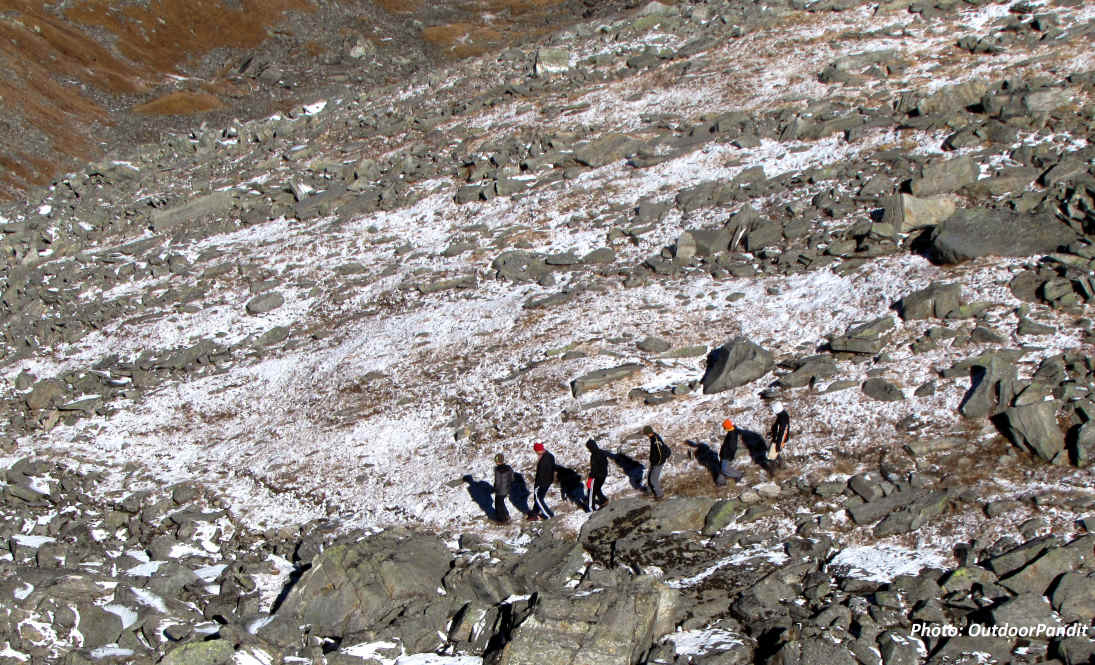
Our bodies are amazing at maintaining a core body temperature in a variety of ambient conditions, albeit within a narrow ‘optimal’ range. Any slide either way and we have to act in order to bring it back to ‘feeling warm and comfortable’.
Our actions can be influenced by what we understand about a phenomenon. This post will attempt to briefly explain how we tend to lose and gain heat, along with a few thoughts on how this can help us in the outdoors.
A. It is important for us to note:
- How one is feeling at any point of time is significant
- Many factors that contribute to one feeling cold can be under our control and hence acted upon to bring in comfort
B. How does one lose heat?
- Conduction (e.g., sitting on cold surfaces)
- Convection (e.g., exposure to wind or water)
- Evaporation (e.g., sweating and sweat using body heat to evaporate)
- Radiation (every ‘body’ radiates heat…)
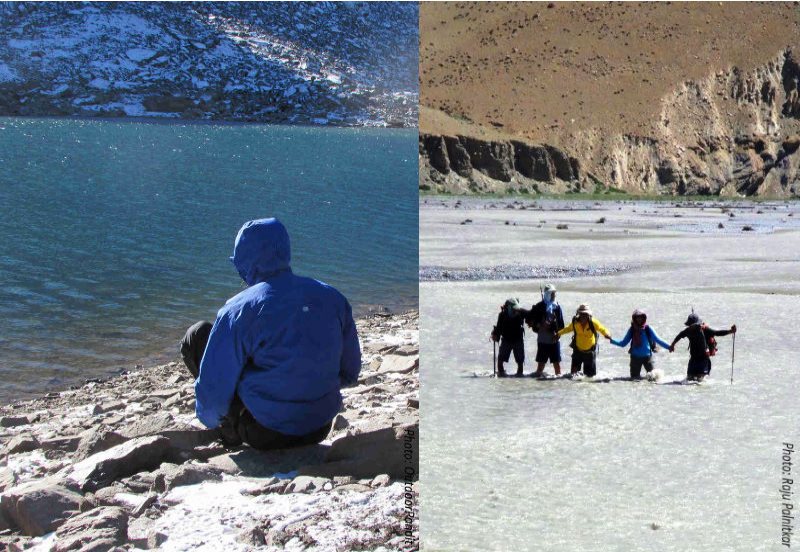
It then becomes obvious that one should take actions that minimise heat loss through these avenues. Which is why you have tips like change into dry clothes as soon as it is possible, use wind-blocks (e.g., clothing, tents) and eat appropriately (to generate body heat).
C. How do we generate or gain heat?
- By eating food
- By undertaking an activity (like walking, doing jumping-jacks)
- External source (e.g., heater, bonfire)
That last alternative is the poorest because it is also largely impractical to be implemented consistently in the outdoors. Managing one’s own body heat is the best way to stay happy!
One simple but effective way I have found helpful in understanding this whole thing is to look at factors affecting what I am going to call ‘cold management’ (different from a cold caused by a virus and which has flu-like signs and symptoms):
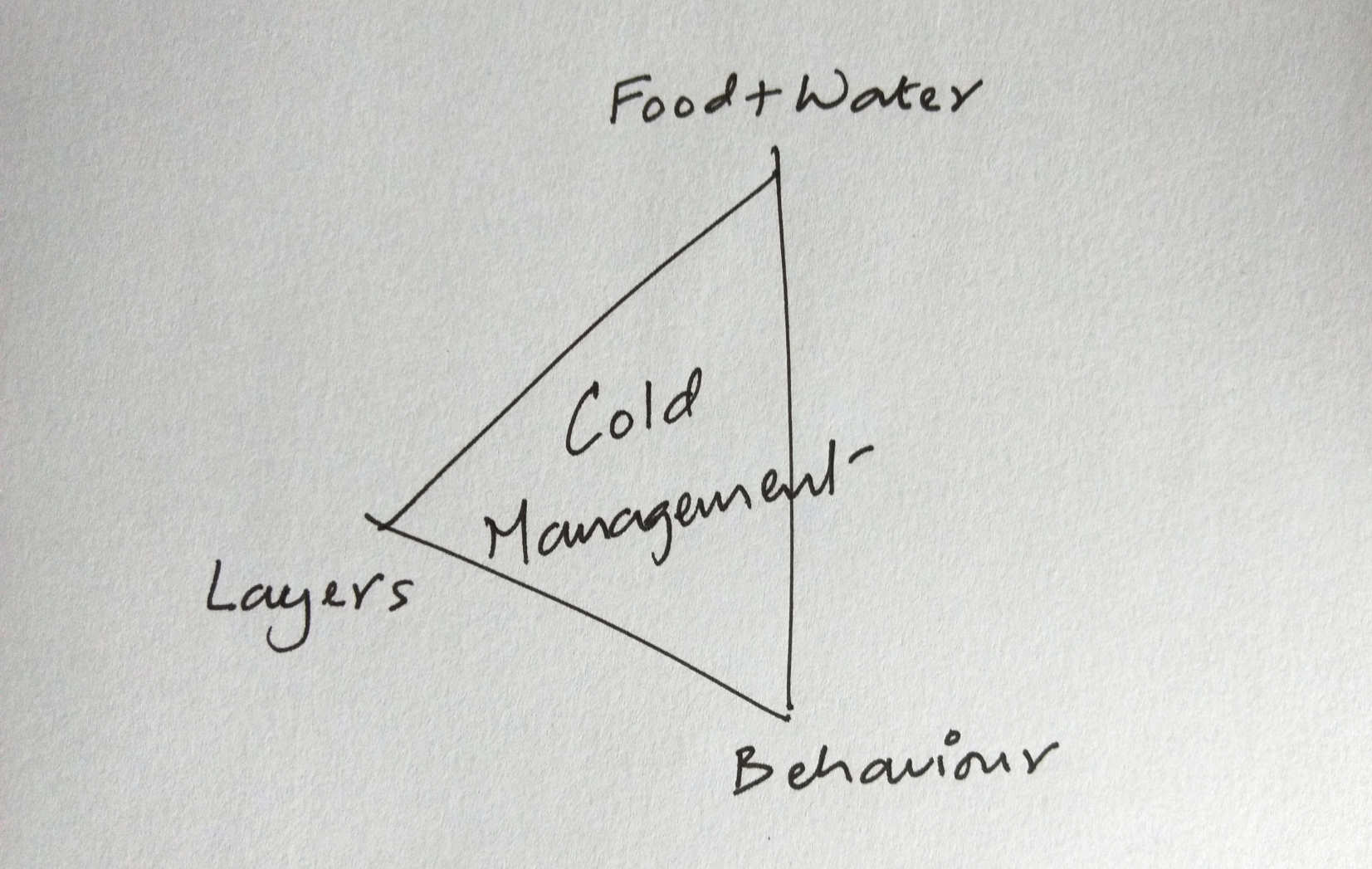
Food & water
Food is (also) used to generate heat in the body. The following is a set of very simple guidelines; they do not intend to create ‘compartments of food types’, and nor is this section comprehensive (e.g., vitamins, salts, fibres, etc. are not referred to here):
Carbohydrates keep you on the go. So breakfast should have more of carbs and less of fats. Lunch can be a mix with emphasis on carbs for endurance activities like hiking.
Fats help in creating a lot of heat. So, if one is generally feeling cold, include more-than-normal fats in dinner. This helps especially if one tends to ‘sleep cold’.
Proteins help in muscle repair (among other things): so a hiker ending a day with sore muscles will benefit from eating some extra proteins during dinner.
Water is essential for the body to effectively maintain its temperature. So one should stay adequately hydrated.
Layers of clothing
One of the function of clothes: help in retaining (trapping) one’s own body heat. Remaining warm in regions like the Himalaya involves managing one’s layers (in addition to other factors like nutrition and hydration).
Multiple layers are better than one thick layer: the trapped layer of air between the two is an insulating layer. Also: if two layers make one feel a bit too warm, one can remove one and feel comfortable.
Since one’s body is covered in clothes, one loses/gains heat through the uncovered head. If one is feeling cold, covering one’s head (warm hat/scarf) makes a huge difference.
Additional notes
Sleeping warm and comfortable is extremely important: so ensure that you are using your sleeping bag appropriately.
If you are eating well, then here is a sample set of layers – use some or all, depending on your comfort: cap + base layer (T-shirt/shirt) + mid-layer (e.g., fleece jacket) + trousers + outer layer (wind-shirt + wind-pants) + warm socks + shoes. In extremely cold conditions, a set of inner thermal wear and/or additional warm layer like a warm vest helps, as also gloves.
Wind layer plays an important role in trapping body heat that tends to escape through warm layers. Use a wind shirt even on small breaks on the trail if there is a breeze or if the ambient temperature is very cold.
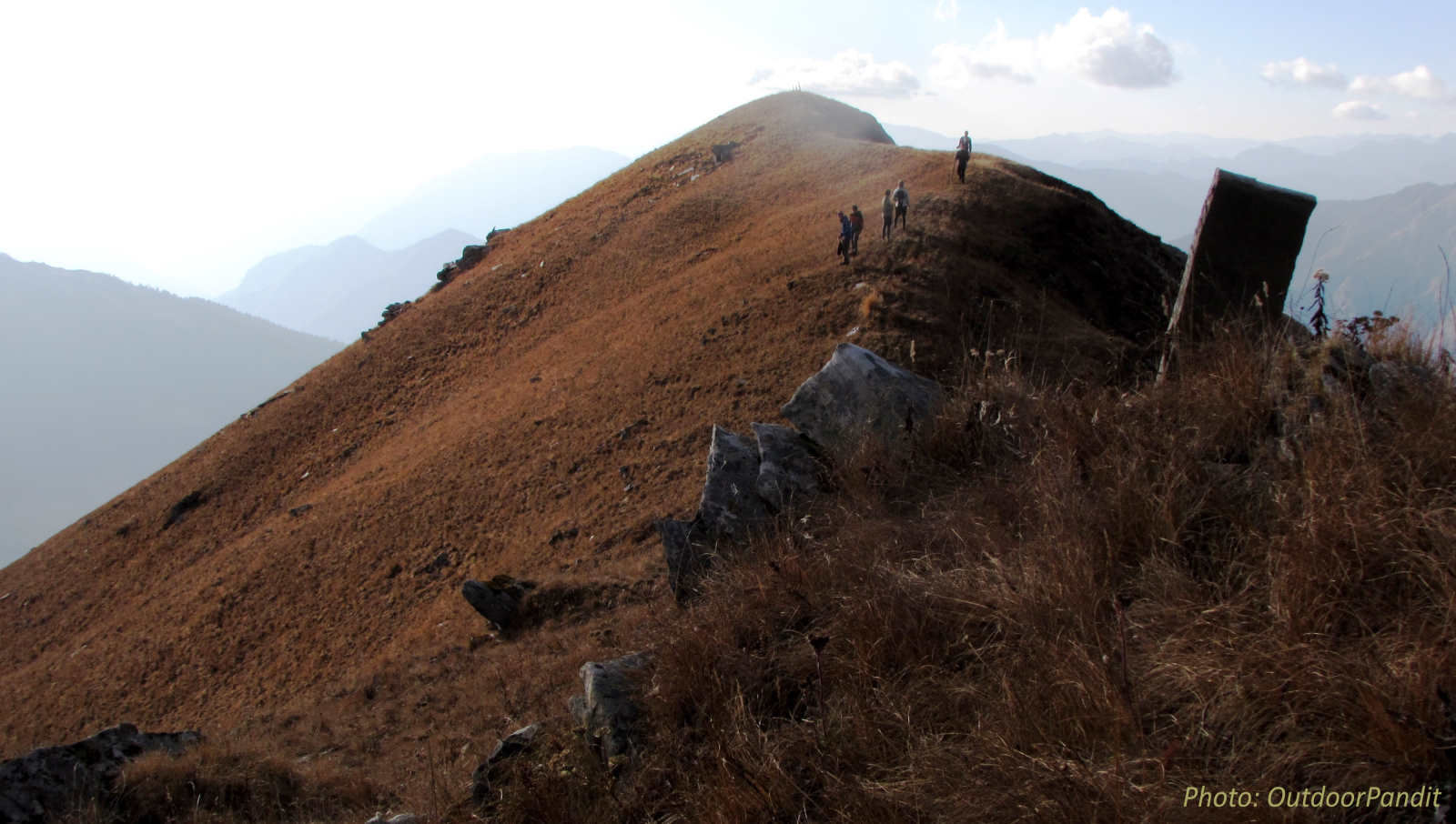
Behaviour
In the context of the preventive approach adopted by wilderness first aid, here’s what ‘NOLS Wilderness Medicine Education, U.S.A.’ states:
‘Compared to the scientist our definition of hypothermia is loose. We call people hypothermic who are probably only stressed by the cold, or are cold and unhappy, or who are simply having trouble coping with the environmental conditions… What’s important is acting early and aggressively to stay warm, rather than needing to rewarm a cold person.’
Our ‘behaviour’ should start at the preparation stage where we choose and purchase gear, get to know how to use each piece appropriately, opt for a route that matches our capacity and conditioning, check if effective leadership is in place and are undertaking a hike for the right reasons. During the hike, we have to stay alert to one’s sense of wellbeing, be self-aware of how we are responding to various conditions including cold weather and also be vigilant of the same in other members of one’s group.
If someone is feeling cold, do these things immediately:
- Shelter the person from wetness (Insulate from rain, snow, damp ground, etc. Change wet clothing, even clothing that is damp with sweat. Cover head, hands and feet with dry clothing items)
- Shelter the person from wind (Use outer layers, get them inside a tent, etc.)
- Have the person drink sweetened liquid (Tea with sugar, sweetened water, sweet juice… fast. If it is hot, it helps)
- And then: give some instant energy food: chocolate, sugar-sweets, etc., followed by complex carbs (E.g., roti/rice/bread/beans/etc.)
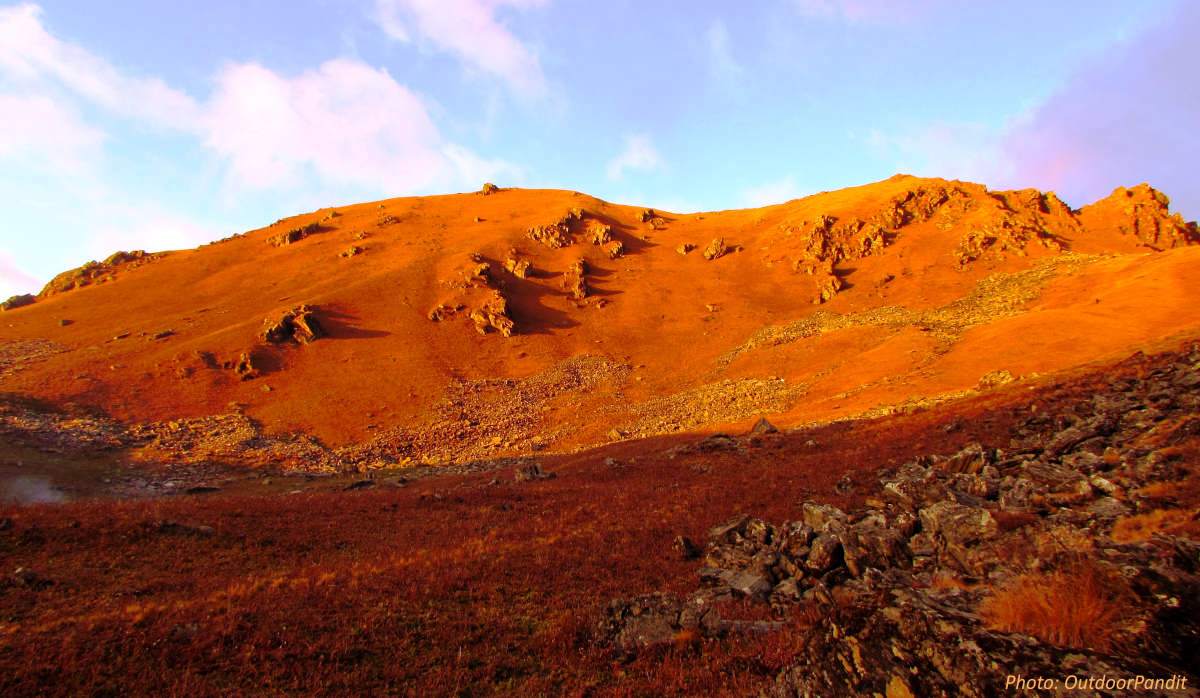
Checklist
Unless there is an illness/injury involved, a person’s feeling cold will be directly connected to inadequate and/or inappropriate a) hydration, b) nutrition, c) layering and d) rest.
So, if there is no illness/injury, this person should start eating & hydrating well, layering well, and resting adequately (sleep!).
If a person has illness/injury then the person needs first aid and/or professional medical help.
Click here for my post on types of layers of warm clothing along with relevant details.
Click here for my post that cites a few examples of how to layer up and delayer for maximising comfort and convenience.

Useful article. A point I would like to add. Keep moving to generate body heat. A case happened in N Sikkim where 3 jawans were lost at 18000ft at night near their bunker. Two of them say down after a while and froze. The third kept walking till daybreak and found his way back to survive.
That’s a sad story… Those three faced a tough set of options, and judgment can be impaired at high altitudes. Also, such decisions tend to be based on too many factors affecting each option, like amount of food available with lost persons and protocol for lost persons, just to cite two…